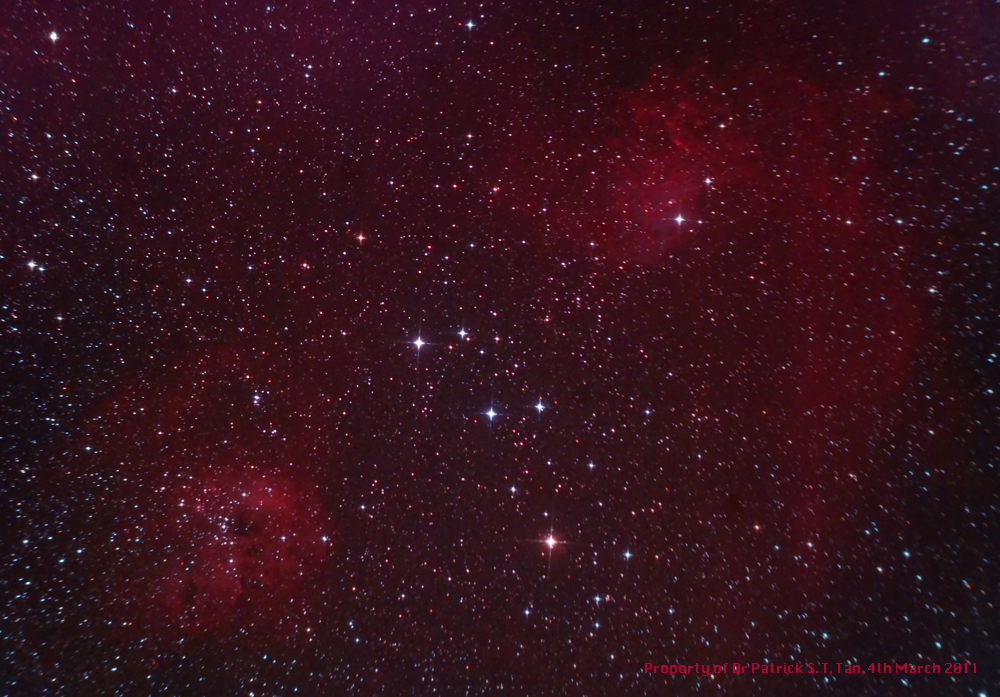
IC405 (C31) - Burning Star Nebula
IC410, NGC1893
Date: 04/03/2011 Time: 2130hrs Location: Sunningwell Temperature: 1.9ºC Relative Humidity: 66%
Camera: Nikon D80 Scope: William Optics Z66 Apo Doublet at prime focus Mount: piggy-backed on Meade LX90 in equatorial mode Filter: Astronomik CLS (LPF broadband filter) Exposures: 5x600 seconds ISO: 1600 F ratio: 5.9 Guidance: Autoguided
No chances for astrophotography all winter. The early spring new moon brought with it clear skies and conditions were as good as it ever gets for this time of year. No wind but high moisture content in the air so transparency was down even though seeing was good. This is the 3rd and most gratifying time I've directed my telescope at the centre of the constellation Auriga. The first time was just with my Meade DSI, the narrow field of which was focussed around the eponymous Burning Star, AE Auriga - surrounded by the 'flames' of the nebulosity in the top right. That picture is archived at this link: IC405. The second time was through a conventional Nikon 70-500mm lens, before I acquired the William Optics apochromat, (see here: Auriga Widefield). That picture shows the same oblique row of paired stars as can be seen in the centre of this photograph, but no nebulosity. This final picture shows you what really lies in that region! The nebula in the bottom left is IC410 in which is embedded an open cluster, NGC1893. The burning star is of interest because it did not form from the dust of the nebulosity in which it currently occurs. It is merely passing through, having been spun out of the Orion system at high velocity. Its energy is making the hydrogen cloud in this region emit its characteristic light, but if you look carefully at different angles around the star, you can detect the faint blue of reflection nebulosity as well. I was unable to preserve this during the processing of this photograph after subtracting the light pollution background. The nebula lies 1500 light years away.
I had a total of 8, 10 minute exposures for this photograph, but was only able to use 5 of them for various technical reasons, making up a total exposure time of 50 minutes. The same white and black point setting, with midtone enhancement in the individual colour channels to bring out the red and blue colours, was carried out in Photoshop, finishing with a single pass through Noise Ninja at nominal settings. Unlike most of my other shots, I tried to use as much of the native frame as possible so you can detect that the field is not completely flat. Focus is excellent in the centre and the stars appear progressively more elongated radially as you look further from the centre. This cannot be helped unfortunately unless I use a field flattener, yet more weight on the telescope + camera set up. Well I might consider it at some point.
HOME PICTURES: Solar system PICTURES: Wide field